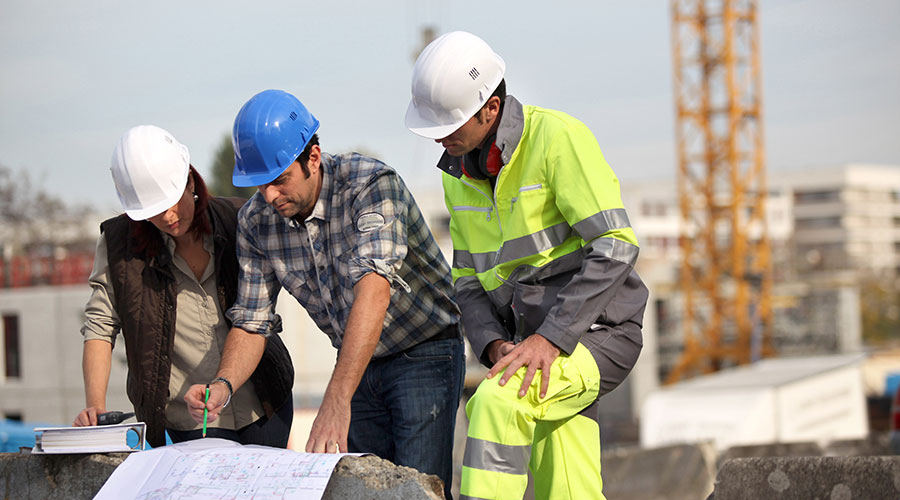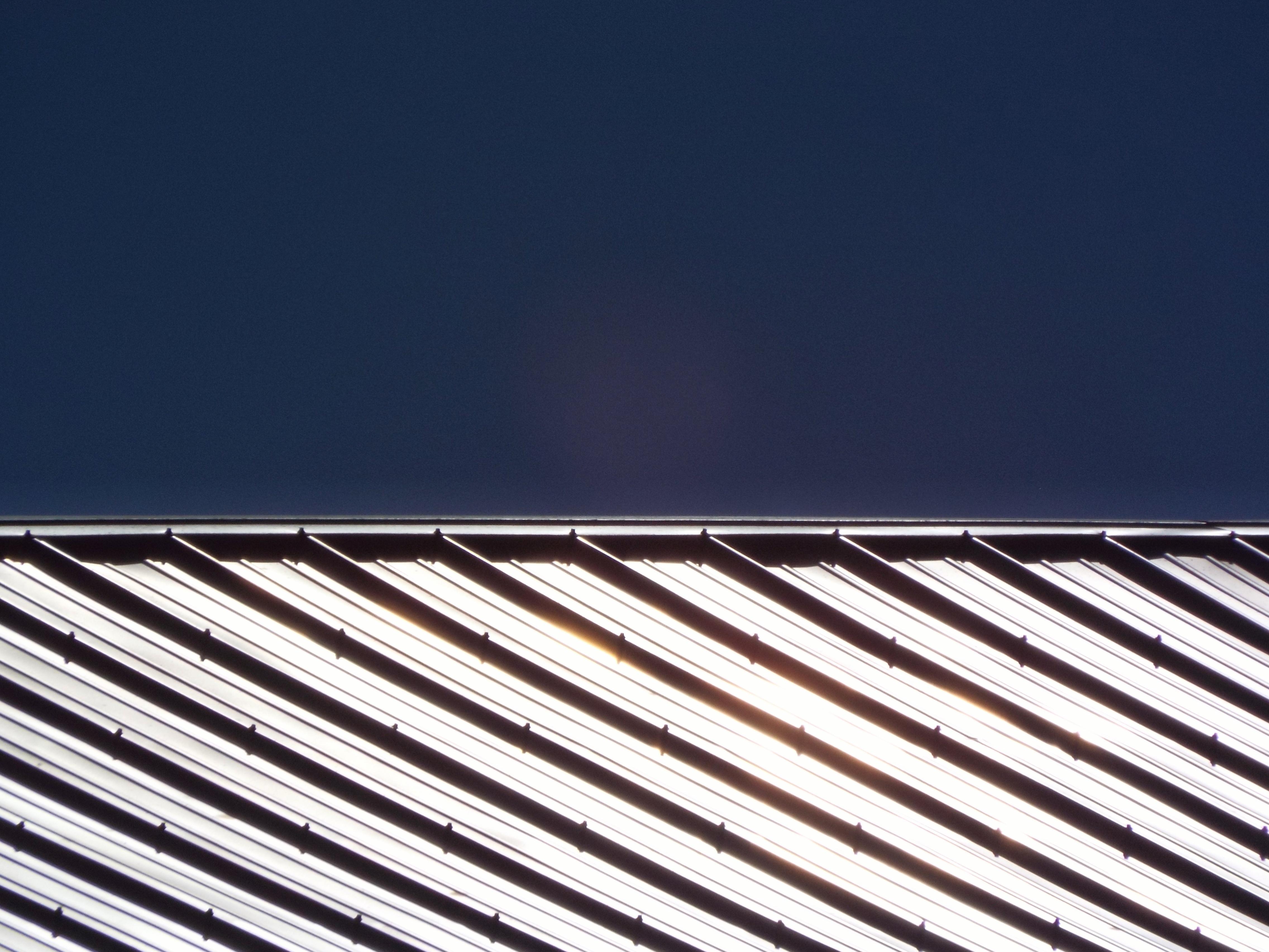Beyond Myths To Solutions
By getting past common misconceptions, managers can turn potential benefits from cool roofs into bottom line benefits
Manufacturers have expanded the market presence of viable and energy-efficient cool roofing products in recent years. Roofing specifiers, building owners and managers, and architects increasingly use cool roofing products because of their capacity for energy savings at a time when energy costs are rising. These roofs also offer several other benefits to institutional and commercial facilities, including reduced indoor temperatures, improved occupant comfort, and reduced cooling loads on HVAC systems. A growing number of building codes also are mandating the use of cool roofs, and more voluntary programs include them as a key element of sustainable design.
Exploring the Benefits
In the simplest terms, a cool roof is highly reflective and can easily emit the small amounts of heat it absorbs. By reflecting and emitting the sun’s energy back to the atmosphere, the roof’s surface stays cooler and transfer less heat to the building interior, compared to a traditional roof.
A roof is defined as cool based on two radiative properties: solar reflectance, or the fraction of solar energy that is reflected by the roof; and thermal emittance, or the relative ability of the roof surface to radiate absorbed heat.
Solar reflectance and thermal emittance both are measured on a scale from 0 to 1. The higher the number, the cooler the roof. No universal definition exists for a cool roof, so different codes and programs have their own requirements for minimum radiative properties that constitute a cool roof.
Just a few years ago, managers had a limited number of product options when it came to cool roofing. Now, thanks to growing demand, managers have hundreds of cool products from which to choose. A cool roofing product exists that can meet virtually any roofing specification.
By reducing the amount of heat transferred to a building’s interior, cool roofs provide a number of additional benefits, including lower energy bills and extended performance lives for roof systems and cooling equipment.
Cool roofs also can benefit the environment. By saving energy, they reduce the air pollution caused by electricity generation. This includes reduced carbon emissions, which contribute to global warming.
By reflecting heat back to the atmosphere, cool roofs mitigate the urban heat island effect, which occurs when the ambient temperature in a city is higher than its surrounding areas due to dark surfaces such as roofs and paved roads that absorb heat from the sun, as well as less shading vegetation. This effect is a major contributor to smog formation.
Myths, Dispelled
Until rising energy prices drove managers in all types of facilities to search for savings in all areas of their buildings — including on rooftops — myths surrounding cool roofing prevented many potential customers from giving it serious consideration. Now, performance track records and research data are helping to dispel many of those myths.
For example, cool roofs are available in all types of roofing systems, from modified bitumen and single-ply membranes to spray-on coatings and painted metal roofing. Yet somehow, the myth persists that the only cool roof options are white coatings. Among the other persistent piece of misinformation surrounding cool roofs are these:
Myth #1: Cool roofs aren’t beneficial in cooler climates.
Managers sometimes assume that cool roofs can increase energy use during the heating season. But if any negative impact exists, it is minimal because there are fewer hours of daylight in winter, and the sun is lower to the horizon and much less intense, resulting in less direct radiation striking the roof surface.
In some cases, heating costs might increase slightly for buildings in cooler regions. But the energy savings from decreased cooling equipment use in summer months more than offsets any increased heating expenses. Other factors that diminish potential heat loss include snow-covered roofs and more overcast days. In short, cool roofs can provide net annual energy savings.
Myth #2: Cool roofs are expensive.
Cool roofing products generally are available in a range of prices. Sometimes, by simply choosing one color over another, managers can achieve a cooler roof at no additional cost to the organization.
While some cool-roofing options might be more expensive than standard, non-cool options, a cool roof generally will pay for itself in a relatively short time through energy cost savings. But managers should note that exact savings depend on a number of factors that include climate zone, product type, building insulation and the type of HVAC equipment used to cool the building.
Myth #3: Cool roofs are not necessary in conjunction with building insulation.
Actually, cool roofs are a good complement to insulation, and vice versa. They prevent heat from penetrating the roof, keeping the insulation and building interior much cooler. Also, insulation has been shown to perform more effectively under a cool roof than under a standard, non-cool roof.
Myth #4: Cool roofing is new.
People have used reflective roofing and other building materials on all types of structures for centuries. Many products in the CRRC Rated Products Directory from the Cool Roof Rating Council (CRRC) have been on the market for decades. Quantifying the benefits of cool roofing might be relatively new, but most of the products are not.
Sustainability’s Impact
Sustainability is an increasingly popular and widespread force in the facilities market. Green building programs and trade shows have drawn significant interest and enthusiasm from architects, building owners, and managers, increasing the demand for environmentally friendly products.
As environmental considerations affect building designs and as managers strive to save energy and money, cool roofing products have gained momentum. The combination of energy savings, less maintenance and increased comfort can make cool roofing products a cost-effective measure.
More often, these products are specified for new construction and re-roofing projects to comply with building codes or to simply improve building efficiency and lower a roof’s life-cycle costs.
Voluntary efforts such as the U.S. Green Building Council’s Leadership in Energy and Environmental Design (LEED) certification program and the Green Building Initiative’s Green Globes system have developed voluntary guidelines and certification programs. The goal of these programs is to provide guidance on the components of a green building. They provide credit and points for using a cool roof. A number of jurisdictions recently adopted these programs as mandatory requirements in their construction specifications.
Finally, in recognition of cool roofs’ energy-saving potential, building energy codes, such as the California Energy Commission (CEC) Title 24, have set standards for cool roofing materials. Title 24 only includes a cool roof requirement for low-slope, commercial buildings. Requirements for other building types are likely to appear in coming years.
The CEC wanted to base Title 24 on third-party product ratings, so it helped create the CRRC. Title 24 exclusively references CRRC as the source of roofing-product ratings to meet their cool roof prescriptive requirement. For more on CRRC, see the accompanying article.
Cool roofing continues to have a monumental impact on the roofing marketplace. Building energy codes, such as Title 24, demonstrate that this is no passing phase. Instead it is a lasting, beneficial addition to sustainable building.
Rebecca Cohen — info@coolroofs.org — is an associate at Energy Solutions and is on the administrative staff of the Cool Roof Rating Council, www.coolroofs.org.
Spotlight: CRRC
The Cool Roof Rating Council (CRRC) is a non-profit organization with a mission to provide unbiased information on the radiative properties of roofing materials.
The CRRC maintains a rating system for measuring and reporting the solar reflectance and thermal emittance of roof products. It publishes product ratings on its online, searchable Rated Product Directory.
The directory is a free public tool that provides educational information to individuals buying or specifying a roof. The CRRC does not set minimum requirements for solar reflectance and thermal emittance. Code bodies that reference the CRRC set the requirements.
The directory lists more than 850 roofing products. Users can search the directory according to one category or many categories concurrently. This searchable, sortable format displays the company seller, brand and model names, product type, slope application, CRRC product identification number, initial solar reflectance, and thermal emittance values, as well as and aged solar reflectance and thermal emittance values as they become available.
Manufacturers and sellers licensed with the CRRC that are interested in obtaining a product rating begin the process by choosing a CRRC accredited independent testing laboratory to perform initial product testing. The CRRC rates products based on the top layer’s measured reflective properties. Once initial testing is complete, licensees can apply for a product rating.
Samples used for initial testing are sent to locations in three different climate zones to weather for three years. Upon removal, they are retested, unwashed. An average of the test results from three sets of samples is used to give as accurate a picture as possible regarding the way an unwashed roofing product will perform after three years of weathering.
To ensure the credibility of its product-rating program, the CRRC conducts random tests. Each year, it selects a percentage of rated products for retesting at one of its accredited independent testing laboratories. The council collects product samples, either directly from a manufacturer’s plant location or through a contractor or distributor.
For more information on the resources and activities of the council, visit www.coolroofs.org or call (866) 465-2523.
— Rebecca Cohen
|
Related Topics:












